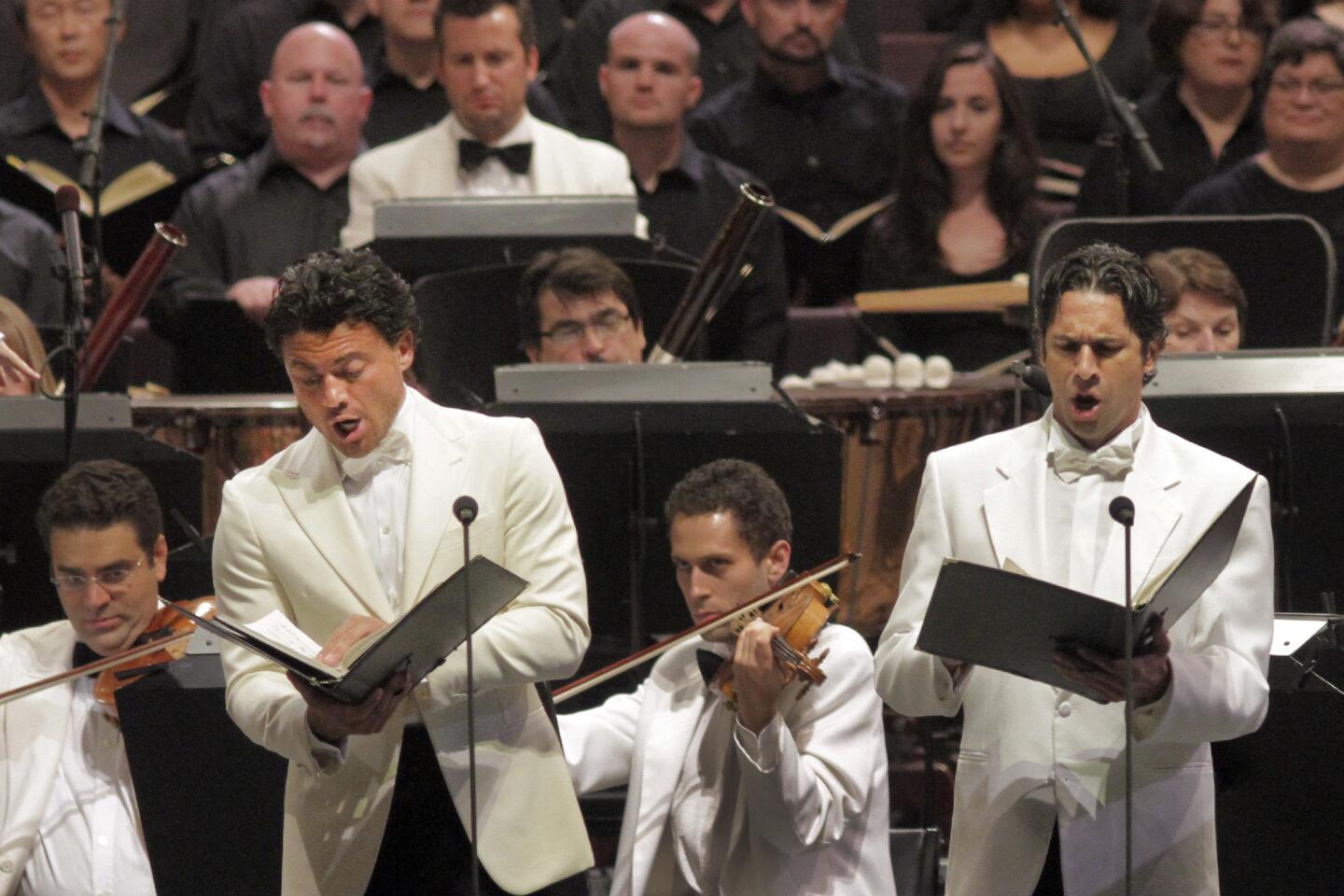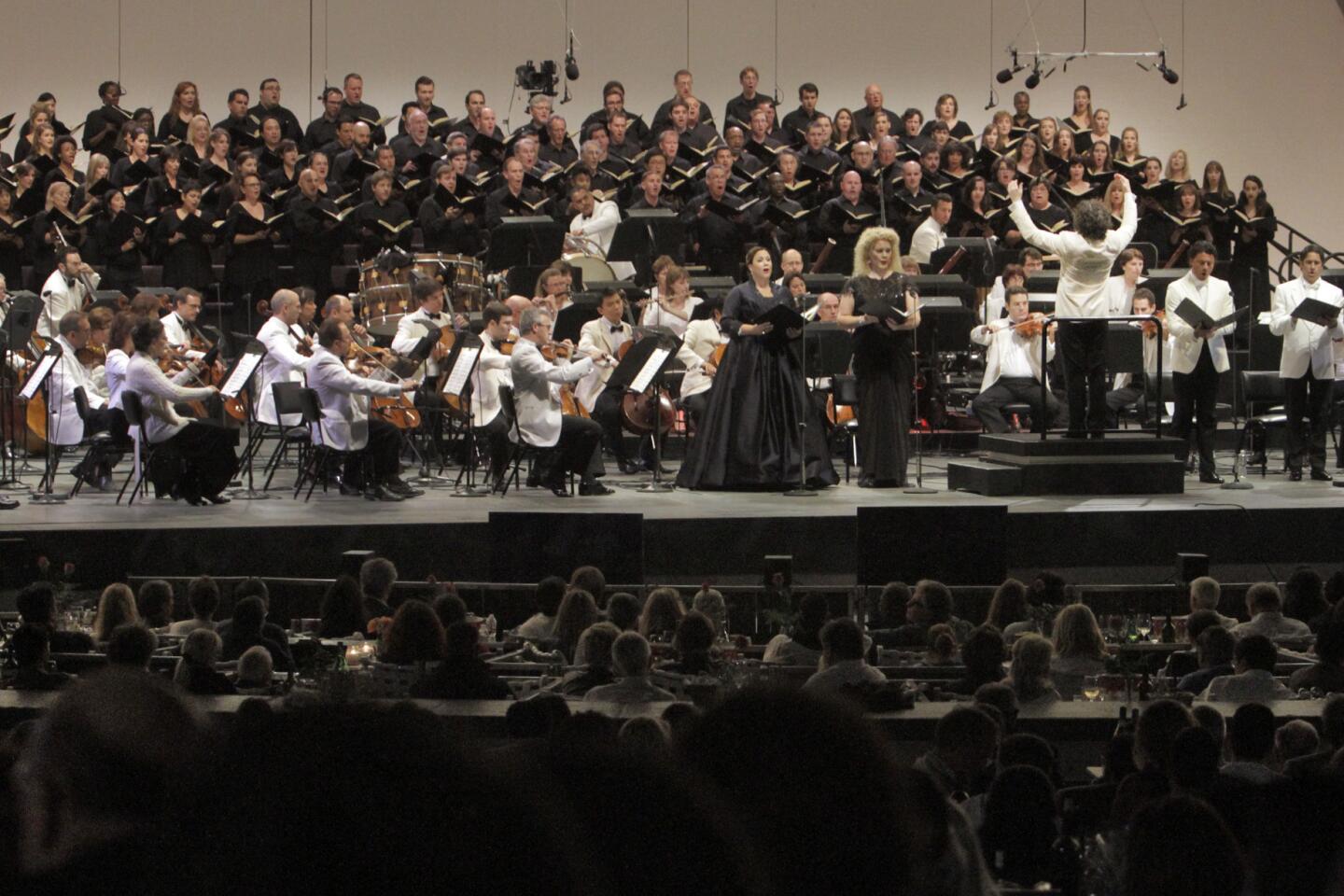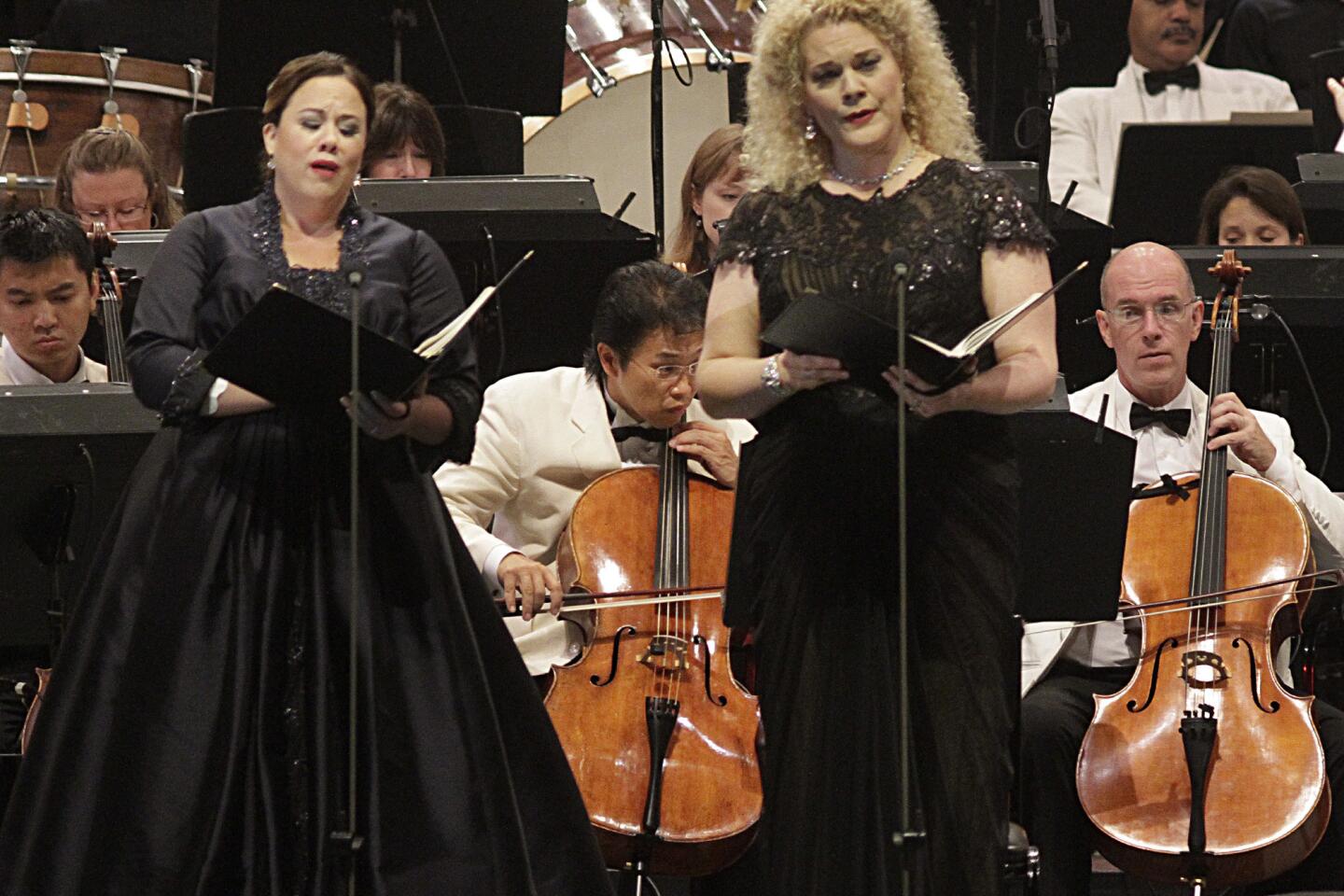Review: Dudamel wondrously plays down Verdi’s Requiem at the Bowl
As the ambience at the Hollywood Bowl becomes increasingly casual and the facilities snazzier (there is a trendy new wine bar along with this summer’s smart new outdoor furniture and upgraded audio and video equipment), the Los Angeles Philharmonic has found it necessary to flash a warning on the high-definition monitors before concerts and at intermission: “Be Good, or Be Gone.” But does the orchestra really mean it?
Tuesday night was not a casual concert. Gustavo Dudamel conducted the first of this week’s two performances of Verdi’s Requiem. It was an important and exceptional evening. A page was turned and a new chapter begun in the maturation of a music director.
That something was in the air must have been obvious. A video crew was on hand to capture this Requiem for a future broadcast on PBS’ “Great Performances” and possible DVD release. Dudamel addressed the large crowd, inviting the audience to contribute its own beautiful sound, the most beautiful sound of all, namely silence.
TIMELINE: Summer’s must see concerts
He didn’t say anything about sight, however, so the hapless video crew got away with making itself part of the story. The amphitheater and shell were made ugly with harsh, glaring light that destroyed the Bowl’s famed symphony-under-stars atmosphere.
Far worse, though, was that the outside crew took over the evening’s live video, projecting their destructively distracting camera work on the high-definition monitors turned to a glaringly extreme brightness setting.
Subtitles came on about halfway through the performance. Solo singers were seen in important moments only from the back, while close-ups of members of the Los Angeles Master Chorale were such that you could count fillings in open mouths. The video included shots of cables on the stage floor, screens that momentarily flashed bright swashes of abstract color resembling Rothko knockoffs and nutty imagery.
I’m guessing that Bernhard Fleischer Moving Images actually knows what it’s doing. The production company has been responsible for some fine classical music programs, and wrongs probably will be righted in the editing room. But the lack of concern for the musical experience of Tuesday’s substantial audience of 11,525 was deeply disconcerting.
PHOTOS: Arts and culture in pictures by The Times
That experience involved a radical and wondrous rethinking of the Requiem on Dudamel’s part. A radical, non-religious thinker, Verdi concerned himself not with theology but drama, not with the dead but the living. He describes in the most viscerally vivid musical terms imaginable what it means to be good, or be gone.
The Requiem is the first Verdi score Dudamel conducted; that was four years ago in Gothenburg, Sweden. The young conductor called it then “a crazy opera,” and the performance was a glorious mess, full of experimentation. A few months after Gothenburg, Dudamel, newly installed as music director of the L.A. Phil, returned to the Requiem at Walt Disney Concert Hall and his interpretation began to hang together, partly in his encouragement of rapturous sonorities. The Requiem was still Italian opera, just not quite so crazy.
On Sunday at the Bowl, crazy-opera Dudamel conducted his first “Aida” in a concert performance that had some of the hallmarks of his first Requiem in its youthful exuberance. Musically the Requiem is the same Verdi as “Aida” — three years separate the works — but instead of Sunday’s extroverted spectacle, Dudamel on Tuesday emphasized intimate, personal expression, this time defying the Bowl’s immensity.
PHOTOS: Gustavo Dudamel career in pictures
To begin with, he conducted without a baton, which he sometimes does in contemporary works or small, intimate pieces, but not in huge, dramatic scores like this Requiem. He moderated his tempos and produced a long line that felt like it flowed like a stream through the entire 90-minute performance.
Dudamel did not deny Verdi his huge theatrical outbursts. The tympani and bass drum shook the Cahuenga Pass in the Dies Irae. The L.A. Phil brass was encouraged to achieve glory. But orchestral sonorities were a further extension of the rapturous glow that Dudamel had begun to achieve in Disney four years ago. He found the Master Chorale’s sweetest spot from the start, and there the great chorus remained.
The soloists were part of the pleasure and the process. Soprano Julianna Di Giacomo was fervent and soaring. Mezzo-soprano Michelle DeYoung brought a dusky contrast. Basses tend to go whole hog in the Requiem, as though the deeper the voice the more God-like. Ildebrando D’Arcangelo went half-hog, and he was all the more classy for it.
Then there was Vittorio Grigolo. The excitable tenor needed reining in, and Dudamel seemed to know exactly how much interpretive rope to extend and when. Grigolo also has a reputation for being temperamental, so it is too bad that there weren’t documentarians backstage documenting the disasters of the PBS documentarians.
You can only imagine the tenor’s reaction in his dressing room when he learned that the video screens showed only the tenor’s back during his biggest solo, the “Ingemisco.” There will be more filming at Thursday’s performance, but surely the filmmakers will be forced to cool it some. Given the quantity of emails I’ve been getting from people wondering what was going on with the video, I suspect the L.A. Phil is inundated with complaints. Be good, or be gone, indeed.
Verdi’s Requiem
Where: Hollywood Bowl, Los Angeles
When: 8 p.m. Thursday
Tickets: $21.50-$119.50
Info: (323) 850-2000; https://www.hollywoodbowl.com
More to Read
The biggest entertainment stories
Get our big stories about Hollywood, film, television, music, arts, culture and more right in your inbox as soon as they publish.
You may occasionally receive promotional content from the Los Angeles Times.












